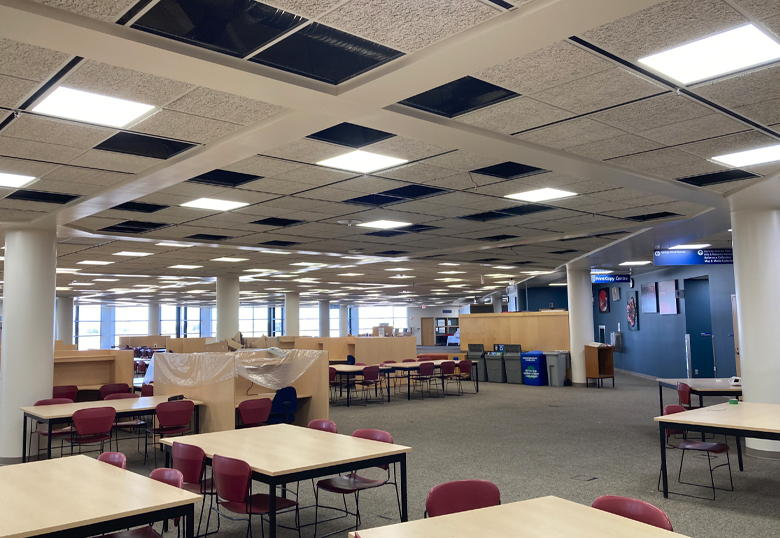A major upgrade to lighting fixtures in the University Library has significantly brightened the University’s most utilized research and study spaces, decreased the environmental footprint of the building and enhanced sustainability efforts on campus.

“This was a major project we undertook this past summer with the goal of improving the lighting in the building, all the while taking advantage of the latest in LED technology to really make an impact in terms of long-term electrical costs and our environmental footprint,” says Tal Meidinger, manager of the Electrical Department in Facilities. “Now that it’s done, we feel we’ve made a substantial improvement in all those areas.”
A total of 3,518 dated fixtures were removed as part of the project and replaced with 1,969 new LED fixtures — enhancing the lighting in the building an estimated 20 to 25 per cent. An additional 310 fixtures were upgraded, rather than being replaced. In all, Facilities estimates it will save 1.4 million kilowatt hours in lighting costs per year.
“That’s a savings of $155,000 per year on a project investment of $600,000, meaning we will realize a cost savings in just under four years,” says Meidinger. “Over the next 10 years, the University will save $1.5 million and significantly reduce its carbon imprint.”
The University has long made environmental sustainability a central component of projects such as these, including renovations and new building design and construction. A key direction of the current Strategic Plan includes the enhancement of the environmental sustainability of the University, including a focus in Facilities on environmental stewardship to reduce the consumption of non-renewable energy and water on campus.
“In addition to replacing all the old lighting with energy efficient LED fixtures, the entire project was approached from a sustainability perspective,” adds Meidinger. “All the metal from the removed fixtures was recycled, as well as all the cardboard and Styrofoam packaging from the new fixtures. We also found a way to reuse as many ceiling tiles as we could in other areas of the library.
